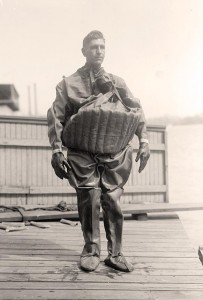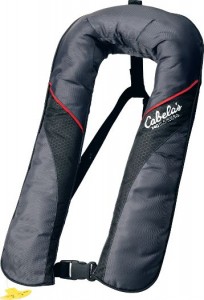The first recorded use of personal floatation devices date back to 870 B.C. Historical records indicate that the Assyrian army used inflatable animal skins to cross a mote during the cold, frigid winters. Greenland Intuits, the original pioneers of kayaking, stitched waterproof coverings from sealskin to protect from cold-water immersion. Per records of the National Lifeboat Institution, the first modern lifejackets used cork as the main buoyancy component. In 1960, self-righting lifejacket became the maritime standard in the United States. It wasn’t until 1985 that the United States Coast Guard adopted the requirements for inspection and approval regarding lifejackets used on America’s waters.
Today’s lifejackets have blended elements of advanced marine technology, lightweight materials, style and comfort. Upon walking into your local kayak shop, you may find a dauntingly large variety of lifejackets which range in color, style, shape, and function. Each physical feature on a lifejacket is designed to meet a specific purpose. For instance, many angler lifejackets are outfitted with extra pockets, a clip for a fishing license, and darker earth-tone color options. Touring lifejackets tend to be sleeker, lighter, and built to provide the greatest range of motion on the water.
One of the newest lifejacket styles to emerge over the past several years are inflatable lifejackets. Categorized by the USGC as Class-V specialty floatation devices, these compact lifejackets are attractive to those who like the low-profile look and feel over a traditional lifejacket. Inflatable life vests are available to two primary styles: traditional horseshoe style and as a belt pack.
How do they work?
Unlike traditional lifejackets, inflatable vests do not provide buoyancy 100% of the time and only keep the boater above water after it had been “activated.” What do we mean by activated? Because inflatable life vests are designed to inflate from a triggered Co2 cartridge, boaters typically have to pull a ripcord to manually release the air. Some models are fitted with an automatic release which triggers the inflation when the boater hits the water.

Here’s a useful animation graphic which shows the progressive inflation of an inflatable life jacket
What the U.S. Coast Guard has to say…
Although inflatable lifejackets are approved by the USCG, a special set of rules and regulations have been set aside specifically for boaters who use inflatable vests. From the U.S. Coast Guard’s Boating Safety Division:
- The best lifejacket is the one you will wear.
- Inflatable lifejackets require the user to pay careful attention to the condition of the device.
- Inflatable lifejackets must have a full cylinder and all status indicators on the inflator must be green, or the device is NOT serviceable, and does NOT satisfy the requirement to carry lifejackets.
- Coast Guard Approved Inflatable lifejacket’s are authorized for use on recreational boats by person at least 16 years of age.
Our thoughts…
In addition to the outlined rules and regulations from the USCG, the following notes should be considered when comparing traditional lifejackets to inflatable versions.
- Inflatable lifejackets have a higher initial price and are more expensive to maintain over the life of the jacket. A new inflatable lifejacket costs about $120 – in addition, a Co2 refill costs about $30
- Co2 refill cartridges need to be replaced every 5 years if not used, or replaced after every single use. At $30 a pop, the overall costs can add up quickly.
- With inflatable life vests, you are relying on technology to save your life. A mechanical failure in the inflation device could be the difference between life and death.
- A traditional lifejacket provides an insulated buffer from cold water immersion while the slimmed down, low-profile design does not provide the same cold shock protection.
- Originally designed for dock workers and emergency aircraft scenarios, the recreational use for inflatable vests may compromise safety if used as a replacement for traditional Class-III vests.
Final Verdict
Although the lifejacket industry has seen dramatic changes in overall design and styling, the uses for lifejackets within recreational boating have remained stable. Whether canoeing, kayaking, summer time cruising, or fishing nothing can replace the safety, security, and dependability of a traditional lifejacket. Not only are traditional lifejackets less expensive, but they provide years of continued use with minimal maintenance other than routine inspection.
Inflatable lifejackets have been an increasingly popular part of recreational boating over the past several seasons. With the increase in demand for inflatable-style vests, more retail stores have them stocked and ready for sale. Many large retail stores are eager and willing to sell an inflatable life vests over traditional vests due to their higher price point. While inflatable vests may be attractive to new paddlers and many will even justify the extra price, new kayakers may not understand the differences that come with purchasing an inflatable vest. It is important that the sales associate or instructor consults with the paddler to understand the customer’s need for an inflatable life vest, and provides additional instruction on how to properly use and maintain the inflatable life vest.
-Alex




